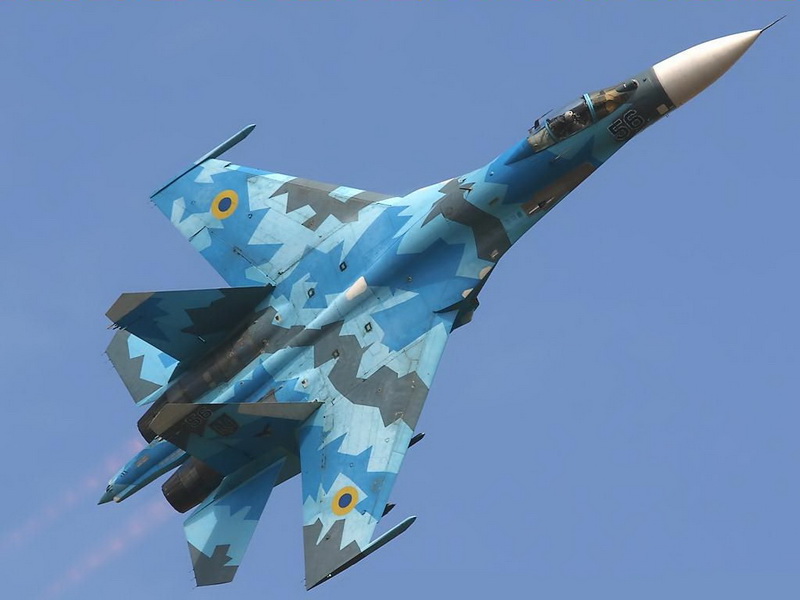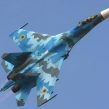
Ukraine’s Air Defense: Balancing Between CSTO and NATO
Publication: Eurasia Daily Monitor Volume: 10 Issue: 134
By:

Ukraine is preparing to take part in air defense exercises with Russia and Belarus and a multilateral air force exercise in Kazakhstan, all to be held by November 2013 (https://zakon4.rada.gov.ua/laws/show/200/2013). Minsk and Astana are key Russian allies in the Collective Security Treaty Organization (CSTO), and Moscow has been seeking to develop a common CSTO air and space defense system. Among post-Soviet countries, Ukraine boasts fairly developed air defense capabilities, yet it technically and financially depends on cooperation with Russia. Using sticks and carrots of air defense cooperation, Kremlin hopes to bring Ukraine closer to the CSTO. Such rapprochement, however contradicts President Viktor Yanukovych’s non-aligned security policy.
Russian politicians continue their efforts to bring Ukraine closer to the “Eurasian NATO”—the CSTO. On June 25, Gennady Vasiliev, the leader of the United Russia Duma faction suggested that Ukraine become an observer in the military bloc (https://www.ukrinform.ua/ukr/news/u_dergdumi_vvagayut_shcho_ukraiini_treba_otrimati_status_sposterigacha_v_odkb_1839491). That same day, the CSTO Military Committee gave basic approval to Russia’s proposal to develop the alliance’s air defense system. Since 1995, Ukraine belongs to the Commonwealth of Independent States (CIS) air defense system, which Russia probably wishes to continue in order to maintain as an outer security buffer. But the new CSTO project is designed to “recreate the entire airspace protection perimeter that existed in the Soviet Union,” said Russian analyst Ivan Konovalov (https://www.odkb-csto.org/news/detail.php?ELEMENT_ID=2097). A Russian political lobby for this project exists in Ukraine within the ruling Party of Regions. Member of Parliament (MP) Oleksandr Kuzmuk, a former defense minister, supported Kyiv’s creation of an integrated air defense system with the CSTO countries back on July 14, 2010 (https://rt.com/politics/roar-russia-strengthens-air/). Yet, joining the CSTO air defense organization would conflict with Ukraine’s “non-bloc” security policy that the government passed shortly after Yanukovych’s election to the presidency (see EDM, May 21, 2010).
The issue is complicated by Kyiv’s dependency on Russia in air protection. Ukraine has a relatively comprehensive air defense system, which functions as part of the country’s air force. Its most powerful surface-to-air missile (SAM) units are the Soviet/Russian long-range S-300 and S-200 missiles, as well as Buk-M medium-range missile systems. Key Ukrainian fighter and interceptor aircraft include MiG-29 and Su-27 and Su-25 Soviet models. The majority of the equipment is over 20 years old, but the low threat level, mechanically robust equipment and well trained people maintain the system at a workable level. Military analyst and former Ministry of Defense (MOD) official Ihor Kozyrkov told Jamestown on July 15 that Ukraine’s air defense counter-terrorist intruder response capabilities were tested in an exercise and approved by counterparts from the United States and Poland on the eve of FIFA’s EURO 2012 Soccer Cup, co-hosted by Ukraine.
While Ukraine’s defense sector was minimally financed during the 2008–2010 economic crisis, procurement somewhat improved in 2012. According to the MOD White Book 2012 (https://www.mil.gov.ua/files/white_book/WB_2012_ua.pdf), the military purchased a Ukrainian-made P-18 radar and received four MiG-29 and Su-25 aircraft, a Kolchuga air surveillance unit and three SAMs—all after modernization. But this is a marginal improvement as equipment maintenance and development requires substantially more resources. On December 22, 2011, Air Force Colonel Dmytro Karpenko told TSN news that no more than 40 percent of Ukraine’s active-duty S-300 missiles were technically in acceptable condition (https://tsn.ua/ukrayina/ukrayinskomu-nebu-prorokuyut-dirki-cherez-zastarili-raketni-kompleksi.html). Maintenance and development of equipment often leads to disputes with Russia. On July 15, Oleksiy Melnyk of Razumkov Center told Jamestown that Russia reacted “painfully” when Ukraine modernized its Soviet aircraft unilaterally, whereas cost and delay issues often arose when Ukraine properly sought the (Russian) manufacturer’s consent before undertaking any modernization efforts. In some cases, Ukraine was accused of disclosing Russian know-how. Furthermore, according to air defense expert Oleksandr Manachynsky, Russia was not happy that Ukraine had exported Buk-M1 missiles to Georgia in 2008 and Soviet Su-27 fighter jets and other equipment to the US in 2010–2012 (Author’s interview, July 15).
Ukraine’s decade-plus plans to develop its own missile systems have not materialized to date. And military analyst Valentyn Badrak has warned about the country lagging behind its neighbors’ armies in modernization (https://gazeta.zn.ua/internal/armii-xxi-veka-zvon-mechey-i-ston-bulata.html). On July 1, 2013, the Ukrainian defense ministry announced it was abandoning its flagship “Sapsan” missile project and would focus instead on “ready” alternative missile models with the hope to have a prototype this year and start production in 2014–2015 (https://www.kommersant.ua/doc/2223606). Meanwhile, Russia could supply its CSTO allies with modern S-400 and S-500 systems, according to analyst Ivan Konovalov (https://www.odkb-csto.org/news/detail.php?ELEMENT_ID=2097). It is also Russia’s official policy to subsidize weapons sales to CSTO members—a policy that could prove particularly tempting for Ukraine.
Ukraine is also dependent on Russia in air defense training. According to the MOD White Book, in 2012, the armed forces held drills with medium- and short-range SAM systems in Ukraine, and the average aircraft crew flight time grew 3–3.5 times. But the military only carried out 30 percent of its planned practice launches of guided missiles. Military analyst Dmytro Tymchuk wrote on December 1, 2011 that Ukraine did not test fire any of its S-200 and S-300s, instead agreeing with Moscow to train at Russian sites, such as Ashuluk in Astrakhan region (https://hvylya.org/analytics/tech/kak-utolit-raketnyj-golod-ukrainskih-pvo.html). Furthermore, Ukraine intends to participate in the CIS Air Defense exercise “Boyevoye Sodruzhestvo 2013” at Ashuluk (https://ua.interfax.com.ua/news/political/145898.html). While Ukraine’s motives are pragmatic, its participation in such exercises, though often only observational, serve Russian propaganda aims when reported on in the media. In its turn, Russia is the one who pays: Nezavisimaya Gazeta’s Vladimir Mukhin cited Russian defense ministry sources that Moscow would spend 3 billion rubles (roughly $97 million) on the CIS air defense system (https://www.ng.ru/armies/2013-06-05/1_army.html).
At the same time, however, Ukraine uses its partnership with the North Atlantic Treaty Organization (NATO) to train in aerial defense. The flagship project Air Situation Data Exchange Program is aimed not only at improving airspace protection and safety, but also serves to modernize the Ukrainian military’s operational standards. During June 2012, amidst the EURO 2012 soccer tournament, Ukraine and the North Atlantic Alliance extended the program to cover data exchange between Ukraine and bordering Central and Eastern European NATO countries (https://www.ukrinform.ua/eng/news/ukraine_nato_to_exchange_data_on_air_situation_during_euro_2012_283319). Moreover, in theory, Ukraine could broaden its air defense cooperation with NATO under the “smart defense” initiative—sharing and pooling capabilities in times of defense austerity. Yet, this is likely to meet Russian opposition. On the other hand, assuming Ukraine’s government manages to improve the ailing economy and sign the Association Agreement with the European Union, Russia would lose some of its leverage over Ukraine’s air defense. For now, however, Kyiv largely continues to maintain the current fragile balance between the two security organizations—NATO and the CSTO.




